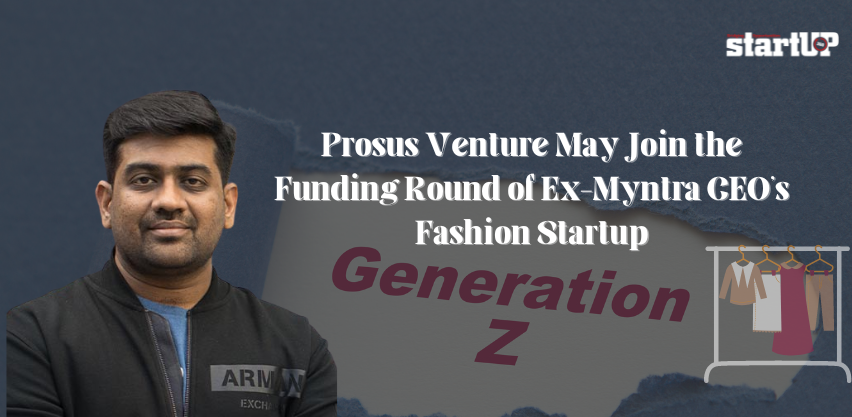Prosus Venture May Join the Funding Round of Ex-Myntra CEO’s Startup
Prosus Ventures, the venture investment arm of Prosus (previously Naspers), is in advanced talks to participate in the funding round of former Myntra CEO Amar Nagaram’s new startup.
After the investment, the worth of Nagaram’s new business, a rapid fashion platform for Gen Z, is estimated to range from $150 to 160 million, according to these sources. Nagaram, who resigned as the CEO of Flipkart-owned Myntra in December, is slated to announce the venture later this month under the name Virgio, which will be a division of Ameyam Enterprises.
Users are placed on a waitlist while the app is still in beta testing before it is officially launched. The $25–30 million round, which was valued at $100 million, was completed by Alpha Wave (formerly Falcon Edge) and Accelhad. The investment by Prosus Ventures is a part of the series A funding, however, the deal is divided into several tranches and Prosus is entering at a greater valuation than the early investors did.
The initial round is divided into several tranches, such as series A1, A2, and so on. The contract is nearly signed by Prosus Ventures. Although the platform won’t be available for use for some time, the Prosus round gave it a valuation of around $150 million, according to one of the people briefed on the situation. Prosus Ventures joining Virgio might cause the round size to rise by about $10 million.
The company also has Mukesh Bansal as an investor. He is the creator of Cultfit and the president of Tata Digital.
People who have seen its intentions and are aware of the company’s activities refer to Nagaram’s Virgio as the “Shein of India.” On-demand consumer needs for fashion products are predicted to be the focus of Virgo. It will rely on the model of “consumer to manufacturing.” The description on the Virgio app’s website says, “Virgio app stands for the start of a new form of social commerce.”
As per the resource, “It’s like Shien from India, but with more of an emphasis on technology. They are attempting to produce rapid fashion based on consumer demand. The goal is to address this desire among Gen Z and new-age consumers, who are also quite young, as the trends are changing quickly”.

